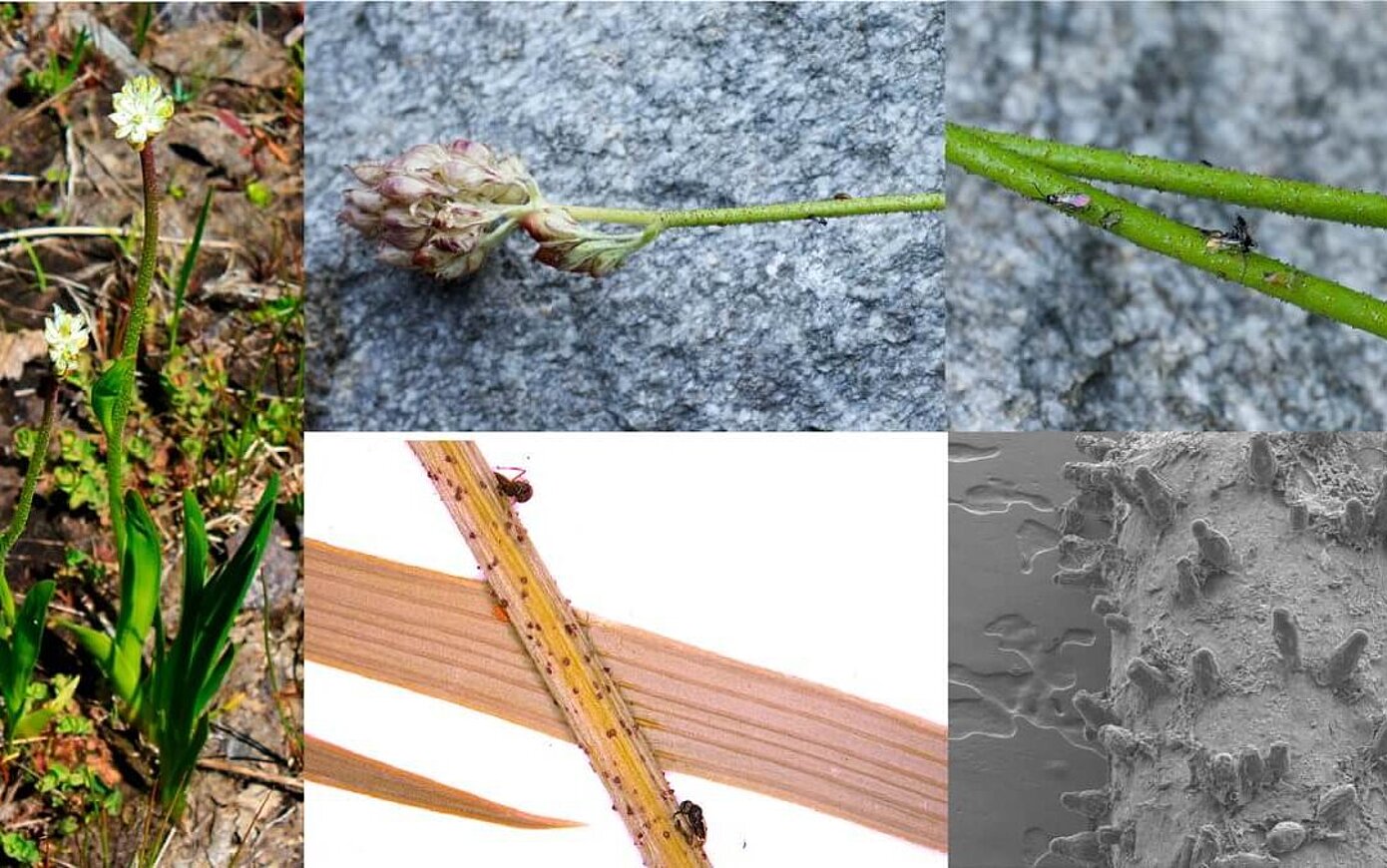A new carnivorous plant lineage (Triantha) with a unique sticky-inflorescence trap
Qianshi Lin, Cécile Ané, Thomas J. Givnish and Sean W. Graham
Department of Botany, University of British Columbia, Vancouver, BC V6T 1Z4, Canada;
UBC Botanical Garden, University of British Columbia, Vancouver,Canada;
Department of Botany, University of Wisconsin–Madison, Madison, WI 53706;
Department of Statistics, University of Wisconsin–Madison, Madison WI 53706
Carnivorous plants fix carbon from photosynthesis but absorb mineral nutrients, especially N and P, from animal prey. There are only 11 independent origins of plant carnivory recognized, in this study the discovery of a new lineage of carnivorous plants, represented by the Triantha occidentalis, a rhizomatous perennial herb found along the west coast of North America, is reported. The study aims to demonstrate nutrient uptake of T. occidentalis from 15N labelled insects. Stable isotopes have frequently been used to investigate plant carnivory since significant accumulation of a heavier or lighter isotope in plant tissue provides clear evidence of nutrient transfer from dead animals to plants.
150 fruit flies (Drosophila melanogaster) were fed with 15N-labeled amino acids and another 80 fruit flies were fed with normal standard Drosophila medium as a control. The 15N-labeled Drosophila were then lightly fixed using parafilm tape to leaves of Triantha and other two plants for control. After 1 week and 2 weeks, the leaves were collected, ground to powder and sent to the University of British Columbia (UBC) Stable Isotope Facility for isotopic analysis. The N content and δ15N were analyzed using a vario EL cube elemental analyzer (Elementar) interfaced with an IsoPrime isotope ratio mass spectrometer. Feeding led to no significant increase in leaf N concentration during the study period but a significant increase of up to 7.5‰in δ15N. Clearly, Triantha is acquiring N from prey, which it accumulates initially in the flower stem and fruits. Assuming a mixing model with a δ15N for input from the soil comparable to that for noncarnivorous plants, a prey δ15N input of δ15NC = 1.71‰, and a δ15NA = −2.28‰ for Triantha, the study concluded that 64% of Triantha foliar N comes from carnivory in preceding years.
This study demonstrated the significant N transfer from prey to Triantha, explaining how this is helping them to survive and compete successfully in low-nutrient environments. Given the existence of Triantha near major urban centres on the Pacific coast, this study shows that other cryptic carnivores may yet remain to
be discovered.
Please find the full paper here: https://doi.org/10.1073/pnas.2022724118



